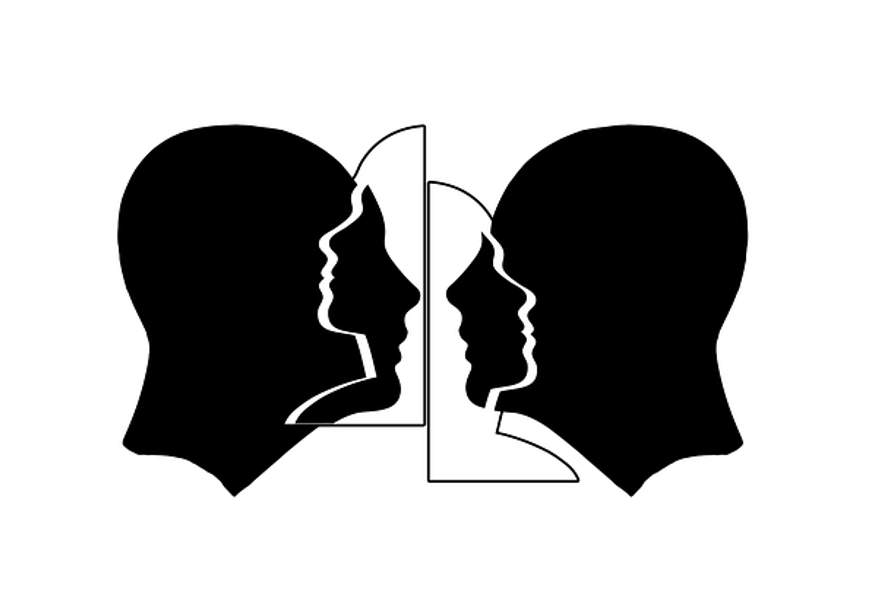Let’s talk about Gender. Perhaps you’ve heard of the phrase, “Gender is a social construct,” and have wondered what this means for all you’ve come to understand about women and men in the workplace. Maybe you’ve heard terms such as non-binary, trans, cis, and more. Here, you’ll find what experts have to say about the differences between sex and gender, meaningful opportunities to build trust in your organization surrounding gender communication practices, and understand how your responsibility as a leader to create safe spaces is evolving.
“If you don’t like change, you’ll like being irrelevant even less.”
-Adlai Stevenson
Let’s face it; change is hard. After all, full agencies like Change Enthusiasm Global exist to help your organization and your leadership, and you harness the power of emotion through change. Women who responded to the 2022 National Study of Change in the Workplace reported feeling anxiety followed by fear and confusion during times of workplace change. Men reported experiencing anxiety followed by frustration and anticipation.
From the same study, when managing change, women believe significantly more than men that seeking support (co-workers, friends, family, etc.) is an effective way to fight burnout. Men believe significantly more than women that exercise is an effective way to fight burnout at work. Additionally, women (83%) are more motivated than men (78%) to adopt change when they feel genuinely heard and understood by their managers and peers. This data informs us how some may potentially navigate change in your organization. While the data is incredibly relevant and needed, it only addresses two sides of an infinitely changing cultural spectrum surrounding gender in the workplace. In truth, this study included less than 1% of survey participants who identify as non-binary. This fact isn’t driven by researcher bias, but likely by the current state of this cultural evolution.
Merriam-Webster defines cisgender as a person whose gender identity corresponds with the sex assigned at birth. According to Jesse Kahn, LCSW, CST, director and sex therapist at The Gender & Sexuality Therapy Center in New York City, that definition is spot-on. Further, gender identity is defined as a person's internal sense of being male, female, some combination of male and female, or neither male nor female. Many believe gender and sex to be synonymous terms and use them interchangeably. However, sex, often thought of as male or female, refers strictly to biology, meaning the hormones, chromosomes, and genital parts a person has, whereas gender is an external expression regarding how you identify yourself, independent of your body and body parts.
Thinking of gender as a binary system composed of men and women is a relatively new, modern concept that only began around the late 18th and early 19th century when men and women were divided into two sexes. Many cultures believe in a gender spectrum; for example, many North American indigenous populations and parts of cultures in Pakistan, India, Bangladesh, and Balkan states - all combined make up nearly a quarter of the population on Earth.
“If you don’t like change, you’ll like being irrelevant even less.”
-Judith Butler
Several inclusive terms that have gained popularity outside the binary gender system are nonbinary, genderqueer, and gender non-conforming, to name a few. So how does this affect you? As humans, we tend to look for same-ness because we are pack animals, and deep down, same-ness means safety. What if you look deeper than appearance for same-ness and attempt to find similarities through expression and compassion instead of using same-ness based on external appearances?
Universal Design began in architecture during the 1970's and initially focused on removing environmental barriers for people with physical disabilities; everyone benefited by adjusting reality to support those who needed it most. For example, consider curb cuts at crosswalks. Curb cuts allow those who use chairs and walkers safe transition from the sidewalk to the street. Curb cuts also remove barriers for child strollers, those of all ages with mobility issues and temporary injuries, lend a path for smooth running, dollies or pallet jacks delivering heavy machinery, and more.
If you wish to create a safe space in your cohort, office, or organization, you are where this safety begins and ends. Everyone is always watching - based on Kantian principles of doing and affecting good. By each person leading the accountability train and recognizing you will be judged on your actions and behavior, you must create and sustain actions that broadcast your value of someone's expression and choice of identity. Contrary to seeking out guidance from those traditionally "othered" in professional environments, everyone is responsible for striving for a more inclusive environment, regardless of status, majority or minority position. In the U.S., if you are part of the majority, regardless of hierarchical structures, based on skin tone or gender in your organization, you have more sway and more ability to influence larger audiences through policy, leadership, and exposure. Support from the top is ideal but not necessary. A great way to get started is by including your pronouns in email signatures and at the beginning of meetings (“My name is Sharon and my pronouns are she/her”). When you normalize the standard practice of pronoun-speak, you help to remove the discomfort of the gender binary system from your work environment entirely.
“What we need to do is learn to respect and embrace our differences until our differences don’t make a difference in how we are treated.”
-Yolanda King
You may think, “I don’t need people to know I’m a woman and what my pronouns are.” The assumption, others know, is linked to your belief of appearance aligning with gender, which we now know is not the same; ultimately, that thought is outdated. Just as we judge people by their behavior, not intent, assuming the pronouns of another person would be to falsely assume someone’s intentions without asking.
What does this mean for you as a leader, colleague, and employee? Great question. I thought you’d never ask. Stephen M.R. Covey, in his book, The Speed of Trust says, “while we tend to judge ourselves by our intent, we judge others by their behavior. [We also] tend to judge others’ intent based on our own paradigms and experience.” This means you are being judged for your behavior by others, not for your intent - since intent is not visible; without asking, intent can only be inferred. As a leader and evolving human, unlearning is a lifelong process. You may have the best of intentions, but if your intentions are misaligned with the actions and interpretations of your actions, then you’ve lost or will ultimately lose the trust of those around you. On the flip, to establish trust, being in intent-action alignment and seeking to unlearn habits and styles of communication that no longer suit you is the recipe for building rapport.
Looking for the next steps beyond email signatures and greetings? Seek out resources to shed light on the dark and blind spots of your gender identity understanding. It is an accidental, albeit toxic habit of larger majorities to ask a single group member to represent the whole. This approach is tokenizing the individual and should be avoided at all costs, especially because any online research could provide you with ample rabbit holes of information. Instead of tokenizing those who are already "othered,” take accountability for your ignorance and spend time immersed in literature, videos, and media readily available for your consumption.
For a more structured approach, you can compensate advocates who have built a platform of expertise and research by welcoming professional training into your personal or professional space. Professional training can be executed remotely or in-person for your organization from some fantastic leaders in the field.
To name a few, check out these resources:
Podcasts:
Reading List:
Professional Training:
- https://www.katz-creative.com/
- https://www.genderspecialist.com/professional-services
- https://www.maynicholson.com/consulting
- https://www.gstherapycenter.com/clinical-supervision-and-consultation
Getting Started - Author’s Current Favs:
Books:
Blogs:
Podcasts:








